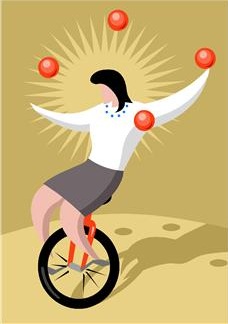
Foundation for Growth: Four Simple Practices Make My Clients Successful
People come to coaching for many reasons. Some want to lead a significant change management initiative, while others want to improve team productivity or develop leadership skills for the next promotion. Whatever the reason, one needs to create the foundation for growth to achieve these outward goals. These building blocks – mindfulness, intentional focus, reflection, and self-care – are essential for coaching success.
1. Mindfulness
Mindfulness serves as the cornerstone of this foundation. In a world where we often operate on autopilot or react to external demands, we must pause and ground ourselves. By incorporating bite-sized mindfulness practices, my clients gain the capacity to observe their thoughts and emotions rather than being swept away by them. A simple technique I often teach is taking 3-5 focused belly breaths, a practice my clients integrate into their daily routines, starting their day and regrouping midday, resulting in increased calmness and heightened presence.
Jason, a software architect, was feeling anxious about his new role. Mindfulness breathing practice at the beginning of his workday helped him reduce the anxiety reaction. He creatively used his morning commute time for the breathing exercise but assured me that he kept his eyes open and hands on the steering wheel.
2. Intentional Focus
Setting daily and weekly intentions is the next step in this process. Every significant growth begins with a deliberate focus on small, actionable steps. Take the case of Carl, an IT Director who aspired to improve his contributions in high-stakes meetings. By setting daily and weekly intentions to prepare and stay present during critical discussions, he saw tangible improvements in his ability to contribute meaningfully.
3. Reflection
Reflection serves as the closing parenthesis for the intention setting. At the end of each day or week, taking time to reflect on one’s intentions helps acknowledge our progress. For instance, Subash, a director of engineering who struggled with work-related rumination, found that dedicating just 10 minutes of reflection at the end of the workday was more effective. Jotting down how he fared according to his intention and where he deviated enabled him to recognize his progress and reclaim his evenings for quality family time.
4. Self-Care
The word self-care means different for different people, and a common misconception is it is another “should” for our overloaded life, which has a negative effect. Mindfully choosing physical and joy-giving activities keeps our minds and bodies receptive to learning and growth.
Physical Activity
While we all know the importance of physical activities and exercise, very few have a consistent routine. Since our work life is primarily sedentary, having some exercise routine at least three times a week is crucial
If you don’t have time for an hour-long gym routine, a 15-minute brisk walk around the neighborhood could help. Cecil, an HR leader who worked from home and had minor children, had a hard time going for exercise. Eventually, she could make a 30-minute run in the evening while her husband could watch the kids. Such a practice improved her mood and creative problem-solving skills.
Joy-giving Activity
Joy is often neglected in our pursuit of professional success. Yet, like the low tire pressure can deteriorate a car’s engine, pursuing daily grinds without pleasure can lead to burnout. Consider the case of Vlad, a VP of product development who rediscovered his passion for painting. He got a happiness boost when he engaged in painting activities, even for an hour each week. Later, he proudly showed me some of his work.
Final Words
Remember that none of these are magic pills to swallow to get your desired results. So, instead of seeing them as another “should” for you to do, treat them as a small, meaningful action towards your growth.
Even though I listed the above as 4-5 different practices, you can sometimes get multiple benefits from one activity. For example, my yoga class serves as an opportunity for physical exercise and mindfulness practice. Similarly, a hike in nature can serve the triple purpose of mindfulness practice, physical exercise, and joy-giving activity. Another idea is combining two activities. For example, a morning mindfulness routine and setting an intention for the day can go hand in hand.
While these practices sound simple, they build a solid foundation for our next-level growth. The good news is they don’t take up much time, and you can start with any of them. So, if you want to take yourself to the next level of your career and leadership success, here is your starting point. I can promise you will see a positive shift as quickly as within 3-4 weeks.
The featured photo is by Tiana at Pexel.com




